Crown Area Hair Transplant Surgery in Malaysia

The video “Crown Area Hair Transplant in Malaysia” features a review of the Smart FUE hair transplant technique, focusing on the crown area. It highlights a before-and-after transformation, showcasing the effectiveness of the procedure in addressing hair loss in this specific region. The visuals emphasize the improved density and natural appearance achieved through the process, reflecting the expertise of the practitioners involved. The short duration of the video provides a concise overview of the benefits and results of the Smart FUE method for crown area restoration. #hairtransplantmalaysia
Male Pattern Hair Loss Level 2: Day 7 Review | Hair Transplant Malaysia
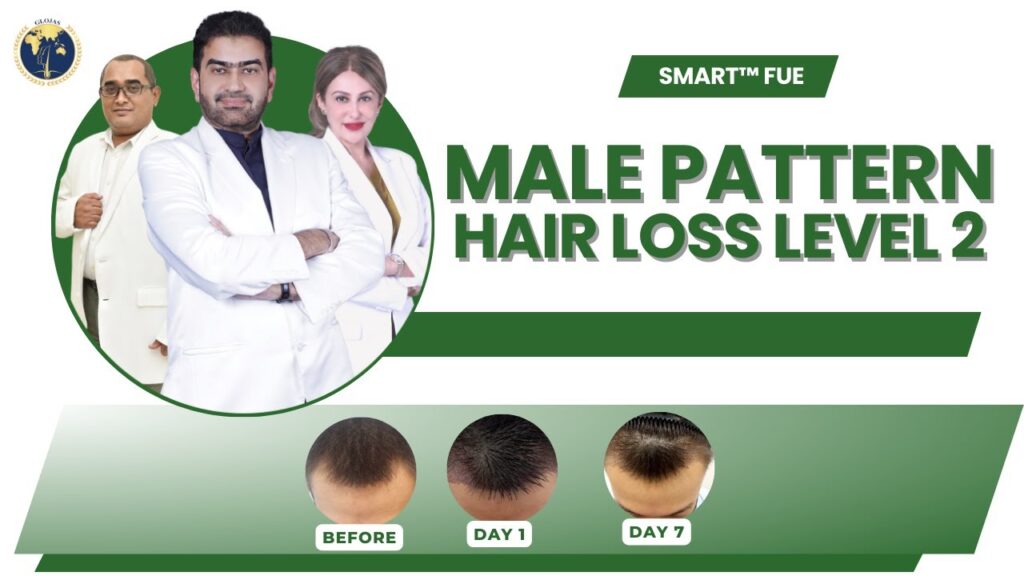
The video “Male Pattern Hair Loss Level 2: Day 7 Review | GLOJAS HAIR TRANSPLANT” provides a review of a hair transplant procedure targeting male pattern hair loss at level 2. The treatment involved the Smart FUE technique, during which 1,000 grafts were harvested to address the front temporal angles. The practitioner adhered to international guidelines to ensure the natural appearance of hair density, angle, and direction. Irregularities were introduced subtly to mimic a natural hairline. The video highlights the meticulous approach and the expertise of the medical team in achieving a homogeneous and realistic outcome. #hairtransplantmalaysia
Hair Transplant Transformation After 2 Weeks in Malaysia

The video “Hair Transplant in Malaysia | Best Results & Cost of Hair Transplant in Malaysia | Transformation After 2 Weeks” discusses a personal account of a 34-year-old individual who underwent a hair transplant procedure in Malaysia. The speaker highlights their satisfaction with the process, emphasizing the professional and world-class standards of the medical team. They mention that the procedure was pain-free, with no bleeding, and that they felt comfortable throughout. The individual expresses gratitude towards the medical staff and notes a significant improvement in confidence, particularly concerning the frontal area of their scalp. This transformation began to show notable results just two weeks after the procedure, illustrating the efficiency and effectiveness of hair transplant services in Malaysia. #hairtransplantmalaysia
Hair Transplant in Malaysia: Global Results

Video Title : Hair Transplant Malaysia – Witnessing Transformations Worldwide – Global Results The video celebrates the extraordinary success stories of hair transplant transformations worldwide, with a special focus on Malaysia’s exceptional expertise. From the bustling city of Kuala Lumpur to the scenic beauty of Kota Kinabalu, the video highlights life-changing results achieved through advanced hair transplant techniques. Showcasing a variety of patients, the video emphasizes how expert procedures in Malaysia have helped individuals regain their confidence and redefine their self-image. The transformations are a testament to the meticulous care and innovative approaches of hair transplant specialists in the country. This inspiring compilation encourages viewers to explore the possibilities of these groundbreaking treatments, demonstrating how they can make a profound difference in one’s life. Don’t miss this celebration of hope, skill, and transformation! Like, share, and subscribe for more incredible success stories from Malaysia’s top hair transplant specialists. #hairtransplant #hairtransplantation #hairtransplantsurgery #hairtransplants #HairTransplantResults #Hairtransplantrecovery #hairrestoration #fue #hairrestorationclinic #HairRestorationSurgery #HairRestorationExperts #HairRestorationJourney #hairrestorationsurgeon #hairrestorationsurgery #hairrestorationspecialist #hairrestorationspecialist #hairrestorationtreatments
Ultimate Guide to Effective Hair Transplant Solutions: 7 Proven Methods to Regain Your Confidence
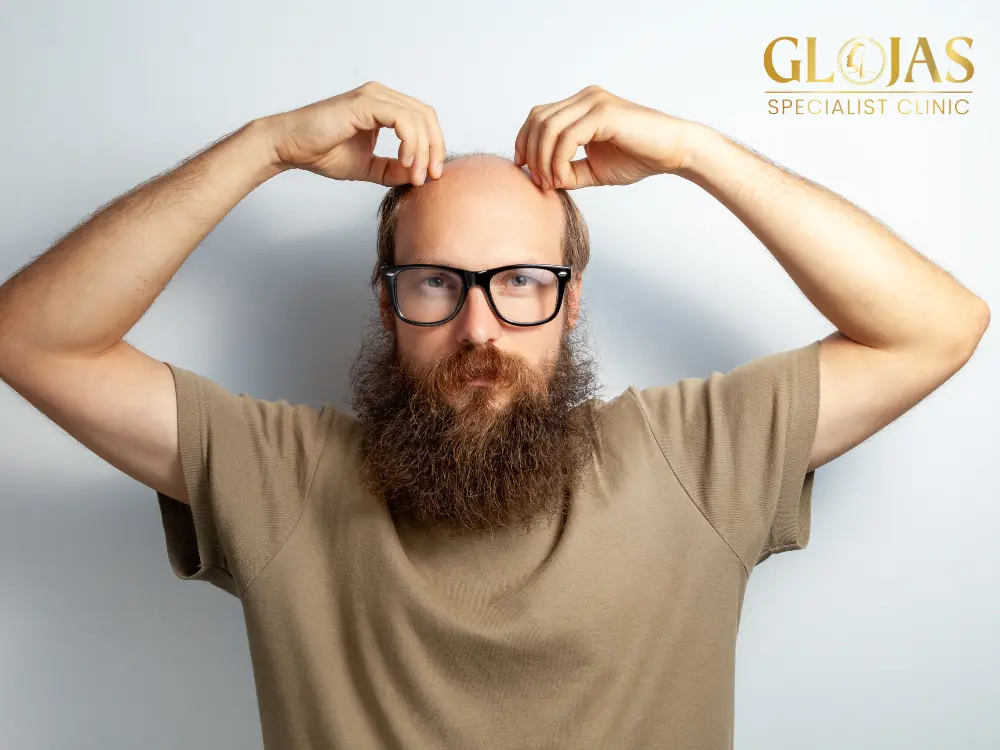
Hair loss can be a distressing experience, affecting not only your appearance but also your self-esteem. Thankfully, modern hair transplant solutions offer a range of effective options to restore your hair and confidence. In this comprehensive guide, we’ll explore the most advanced and reliable hair transplant solutions available today, ensuring you can make an informed decision tailored to your needs. Understanding Hair Transplant Solutions Hair transplant solutions have evolved significantly over the years. What once was a risky and invasive procedure has now become a highly effective and minimally invasive solution for those suffering from hair loss. These solutions are designed to move hair follicles from one part of your body (usually the back or sides of your scalp) to areas where hair is thinning or balding. The result? Natural-looking hair growth that can last a lifetime. Types of Hair Transplant Solutions There are several hair transplant methods available, each with its own set of advantages and disadvantages. Below, we’ll delve into the most popular types: 1. Follicular Unit Extraction (FUE) Follicular Unit Extraction (FUE) is one of the most advanced hair transplant solutions available today. In this procedure, individual hair follicles are extracted from the donor area and transplanted to the balding areas. FUE is highly favored because it leaves minimal scarring and has a faster recovery time compared to other methods. Benefits of FUE Minimally Invasive: FUE is less invasive than traditional methods, leading to quicker healing. Natural Results: Since hair is transplanted in small units, the results look natural and blend seamlessly with existing hair. Reduced Scarring: Only tiny, barely visible scars are left behind, making it an excellent option for those who prefer shorter hairstyles. 2. Follicular Unit Transplantation (FUT) Follicular Unit Transplantation (FUT), also known as the strip method, is a more traditional approach to hair transplantation. During FUT, a strip of scalp is removed from the donor area, and the follicles are extracted from this strip to be transplanted into the recipient area. Benefits of FUT High Graft Yield: FUT can harvest a larger number of hair follicles in a single session, making it ideal for those requiring extensive coverage. Cost-Effective: Generally, FUT is less expensive than FUE, making it a more budget-friendly option for many. Long-Term Results: The hair follicles transplanted using FUT are permanent and will continue to grow throughout your lifetime. 3. Robotic Hair Transplantation Robotic hair transplantation is a cutting-edge technique that uses advanced robotics to assist in the FUE procedure. The robot provides precision and accuracy, ensuring that hair follicles are harvested and transplanted with minimal damage and optimal placement. Benefits of Robotic Hair Transplantation Precision: The robot’s accuracy reduces the risk of human error, leading to better results. Consistency: Robotic assistance ensures uniform graft placement, enhancing the natural appearance of the transplant. Faster Procedure: Robots can speed up the process, reducing the time needed for the surgery. 4. Platelet-Rich Plasma (PRP) Therapy While not a traditional hair transplant solution, Platelet-Rich Plasma (PRP) therapy is often used in conjunction with hair transplants to promote faster healing and improve hair growth. PRP involves extracting a small amount of your blood, processing it to concentrate the platelets, and then injecting this enriched plasma into your scalp. Benefits of PRP Therapy Enhanced Healing: PRP accelerates the healing process after a hair transplant, reducing recovery time. Increased Hair Density: It can stimulate hair follicles, leading to thicker, fuller hair in treated areas. Non-Surgical: PRP is a non-invasive treatment with minimal discomfort and downtime. 5. Stem Cell Hair Transplants Stem cell hair transplants are an emerging field within hair restoration. This technique involves using your body’s own stem cells to promote hair growth. Although still under research, stem cell hair transplants show promise as a future hair loss treatment. Benefits of Stem Cell Hair Transplants Innovative: This method could revolutionize hair restoration, offering a less invasive alternative to traditional transplants. Regenerative Potential: Stem cells have the ability to regenerate and repair damaged tissues, potentially leading to better hair growth. 6. Direct Hair Implantation (DHI) Direct Hair Implantation (DHI) is a modified version of FUE that allows for more precise placement of hair follicles. In DHI, each hair follicle is implanted directly into the scalp using a specialized tool, eliminating the need for creating recipient sites beforehand. Benefits of DHI Improved Precision: DHI allows for more accurate placement of hair follicles, leading to a more natural look. Less Handling: The hair follicles are handled less during the procedure, reducing the risk of damage. Quicker Recovery: Since DHI is a refined version of FUE, patients often experience a faster recovery time. 7. Combination Techniques In some cases, a combination of different hair transplant solutions may be recommended to achieve the best results. For instance, FUE may be combined with PRP therapy to enhance healing and improve hair density. The combination of techniques is tailored to the individual’s specific needs, providing a customized solution for hair loss. Benefits of Combination Techniques Customized Treatment: By combining different methods, you can address multiple aspects of hair loss for optimal results. Enhanced Outcomes: The synergy between techniques can improve the overall effectiveness of the treatment. Flexible Approach: Combination techniques offer flexibility in treating various types and stages of hair loss. Choosing the Right Hair Transplant Solutions Selecting the best hair transplant solution depends on several factors, including the extent of your hair loss, your budget, and your desired outcome. Consulting with a qualified hair restoration specialist is crucial to determine the most suitable option for your needs. Factors to Consider Extent of Hair Loss: Different solutions are better suited for varying degrees of hair loss. Cost: Consider your budget and weigh it against the benefits of each solution. Recovery Time: Some methods offer quicker recovery times, which may be important depending on your lifestyle. FAQs About Hair Transplant Solutions How long does it take to see results from a hair transplant?Typically, it takes about 6 to 12 months to see the full results
Truth About Stomach Lipo: 5 Powerful Benefits You Should Know

Excess fat around the stomach can be stubborn and difficult to eliminate through diet and exercise alone. For many individuals, this can be a source of frustration and may impact self-confidence. Fortunately, stomach liposuction (stomach lipo) is an effective surgical procedure designed to target and remove fat from the abdominal area, giving you a more contoured and sculpted appearance. In this article, we will delve into the details of stomach lipo, discussing how it works, the benefits, and what to expect from the procedure. If you’ve been considering a solution to achieve a flatter stomach, this guide will provide you with the essential information to make an informed decision. What is Stomach Lipo? Stomach liposuction, commonly referred to as stomach lipo, is a cosmetic procedure that removes excess fat from the abdominal area. It is particularly effective for individuals who have localized fat deposits that are resistant to diet and exercise. The procedure involves the use of a small tube called a cannula, which is inserted into the fat layer beneath the skin. The cannula is used to suction out the fat, resulting in a slimmer, more toned abdomen. Stomach lipo is not a weight-loss solution but rather a body contouring technique aimed at improving the shape and proportion of the stomach area. Types of Liposuction for the Stomach There are several methods used to perform stomach lipo, each with unique benefits: Tumescent Liposuction: The most common method where a saline solution mixed with a numbing agent is injected into the fat before suctioning. Ultrasound-Assisted Liposuction (UAL): This technique uses sound waves to liquefy fat before removal, making it easier to extract. Laser-Assisted Liposuction (LAL): Lasers are used to melt the fat before suction, offering a more precise approach. Power-Assisted Liposuction (PAL): This method utilizes a vibrating cannula to break up fat cells, facilitating a quicker removal process. Each technique is designed to help patients achieve a flatter, more contoured abdomen, with the choice of method depending on the individual’s needs and the surgeon’s recommendation. Top 5 Benefits of Stomach Lipo Stomach lipo is popular for good reason, as it offers several benefits that can drastically improve one’s physical appearance and self-esteem. Below are five key advantages of the procedure: 1. Enhanced Body Contour and Definition Stubborn fat in the stomach area can obscure muscle definition, making it difficult to achieve the toned, flat appearance many desire. Stomach lipo helps sculpt the abdominal area, creating a smoother, more defined contour. After the procedure, patients often report a flatter stomach and improved body proportions. 2. Targeted Fat Removal Unlike weight loss from diet and exercise, which affects fat cells all over the body, stomach lipo specifically targets the areas where fat is most difficult to eliminate. This precision allows for the removal of fat in localized regions, ensuring that only the fat in your abdominal area is reduced while the rest of your body remains unaffected. 3. Long-Lasting Results One of the major advantages of stomach lipo is its lasting impact. Once the fat cells are removed, they do not grow back. As long as patients maintain a healthy lifestyle and stable weight, the results of stomach liposuction can last for many years. 4. Minimally Invasive with Quick Recovery Compared to more extensive surgical procedures, stomach lipo is considered minimally invasive. Most patients experience a quick recovery time, with the ability to resume normal activities within a few days. The use of modern techniques like laser-assisted or ultrasound-assisted liposuction can further reduce downtime and minimize discomfort. 5. Boosted Confidence and Self-Esteem Stubborn fat around the stomach can be a source of self-consciousness for many individuals. After undergoing stomach lipo, patients often feel more confident in their appearance and are more comfortable wearing fitted clothing or swimwear. This boost in confidence can positively impact one’s social life and overall quality of life. Who is an Ideal Candidate for Stomach Lipo? Stomach lipo is best suited for individuals who are in good health and close to their ideal body weight but struggle with excess fat in the abdominal area. The ideal candidate for this procedure: Has good skin elasticity, which helps the skin conform to the new body shape after fat removal. Is within 30% of their ideal weight and maintains a healthy lifestyle. Has realistic expectations about the outcome of the procedure. Is not significantly overweight or seeking liposuction as a weight-loss alternative. It’s important to note that stomach lipo is not a substitute for a healthy diet and exercise. It’s designed to complement an already healthy lifestyle by addressing fat deposits that are resistant to other methods of fat reduction. What to Expect Before and After Stomach Lipo Before the Procedure Before undergoing stomach lipo, you’ll need to consult with a board-certified plastic surgeon. During this consultation, the surgeon will assess your body, discuss your aesthetic goals, and recommend the most appropriate liposuction technique for you. Additionally, you may need to: Avoid certain medications that increase the risk of bleeding. Maintain a healthy diet and hydration in the days leading up to the procedure. Arrange for someone to drive you home after the surgery, as you’ll be under anesthesia. After the Procedure After stomach lipo, you can expect some swelling, bruising, and discomfort in the treated area. These side effects are normal and will gradually subside over a few weeks. Your surgeon may provide you with a compression garment to wear, which helps reduce swelling and promotes healing. Patients are usually able to return to light activities within 3-5 days, although more strenuous activities should be avoided for several weeks. The final results of the procedure will become more apparent as the swelling goes down, typically after a few months. Potential Risks and Complications While stomach lipo is generally safe when performed by a qualified surgeon, like any surgical procedure, it comes with some risks. Potential complications include infection, scarring, asymmetry, or contour irregularities. It’s crucial to follow your surgeon’s post-operative instructions carefully to minimize
Glowing Beauty Skincare: 7 Essential Steps to Radiant and Healthy Skin
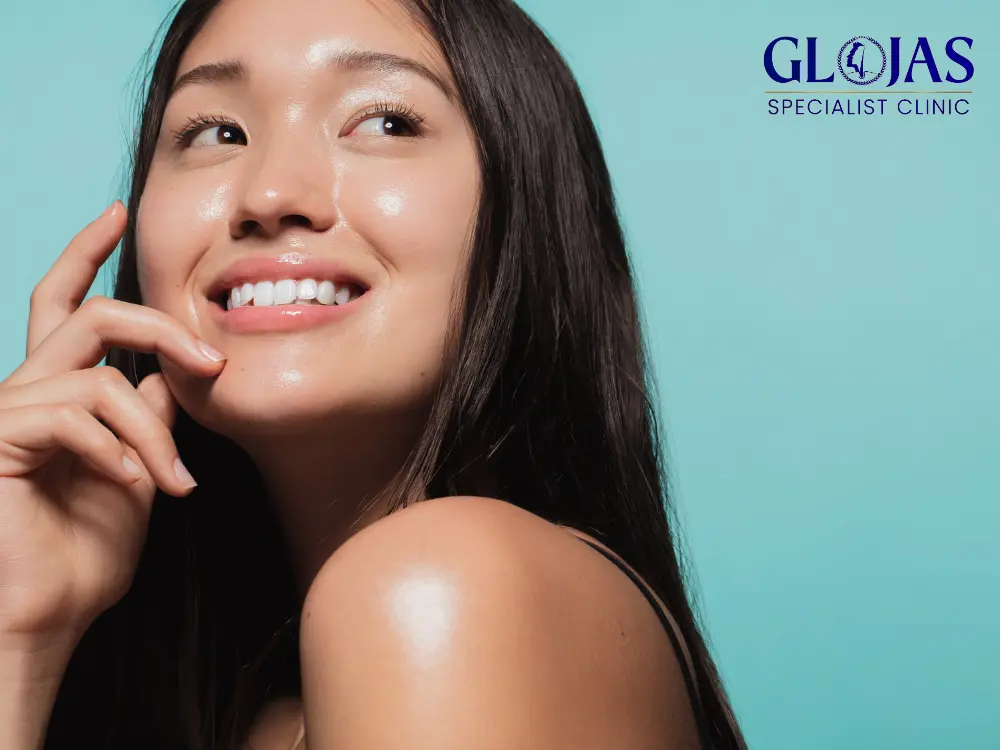
Achieving glowing, radiant skin is a beauty goal for many, but it often requires more than just good genetics. A dedicated skincare routine, tailored to your specific needs, can significantly enhance your skin’s health and appearance. In this comprehensive guide, we’ll explore the key elements of a glowing beauty skincare regimen, focusing on the steps you need to take to achieve and maintain that coveted luminous complexion. Understanding the Importance of Glowing Beauty Skincare Glowing beauty skincare is not just about looking good; it’s about maintaining healthy skin. Healthy skin is more resilient, better at repairing itself, and less prone to issues like acne, dryness, and premature aging. A glowing complexion is often a sign of well-hydrated, well-nourished skin that’s free from toxins and damage. Benefits of Glowing Skin Boosted Confidence: When your skin glows, you feel more confident, and this can positively impact various aspects of your life. Signs of Health: Glowing skin is often an indicator of good internal health, reflecting a balanced diet, adequate hydration, and proper skincare. Youthful Appearance: A radiant complexion can make you look younger, as it minimizes the appearance of fine lines, wrinkles, and dullness. 1. Cleansing: The Foundation of Glowing Beauty Skincare Cleansing is the cornerstone of any glowing beauty skincare routine. It removes dirt, oil, and impurities that can clog pores and lead to breakouts and dullness. Choosing the Right Cleanser Skin Type Consideration: Select a cleanser that matches your skin type. For example, a hydrating cleanser is ideal for dry skin, while a gel-based cleanser works well for oily skin. Gentle Formulas: Opt for a gentle cleanser that effectively removes impurities without stripping your skin of its natural oils. Cleansing Routine Twice Daily Cleansing: Cleanse your face twice a day—once in the morning to remove overnight impurities and once in the evening to wash away the day’s buildup. Proper Technique: Use lukewarm water and gentle circular motions to cleanse your skin, ensuring all areas are covered without over-scrubbing. 2. Exfoliation: Removing Dead Skin Cells for a Brighter Complexion Exfoliation is a crucial step in glowing beauty skincare as it removes dead skin cells that can make your skin look dull and tired. Regular exfoliation reveals fresh, vibrant skin underneath. Types of Exfoliants Physical Exfoliants: These include scrubs with small particles that physically slough off dead skin cells. Be cautious with these, as they can be abrasive if overused. Chemical Exfoliants: Products containing acids like AHAs (alpha hydroxy acids) or BHAs (beta hydroxy acids) gently dissolve dead skin cells without the need for scrubbing. Exfoliation Frequency Regular but Not Excessive: Exfoliate 2-3 times a week depending on your skin type. Over-exfoliating can lead to irritation and damage, so it’s important to find a balance. 3. Hydration: The Key to Plump and Glowing Skin Hydration is essential for maintaining glowing skin. Proper hydration ensures your skin stays plump, smooth, and resilient, reducing the likelihood of dryness and dullness. Moisturizers Selecting a Moisturizer: Choose a moisturizer that suits your skin type. For instance, use a lightweight, non-comedogenic moisturizer for oily skin, and a richer cream for dry skin. Ingredients to Look For: Look for ingredients like hyaluronic acid, glycerin, and ceramides, which help lock in moisture and strengthen the skin barrier. Hydrating Mists and Serums Hydrating Mists: These can be used throughout the day to refresh and hydrate your skin, especially in dry environments. Serums: Consider adding a hydrating serum to your routine, which can deliver concentrated moisture and nutrients deep into your skin. 4. Sun Protection: Shielding Your Skin from Harmful UV Rays One of the most crucial steps in glowing beauty skincare is protecting your skin from the sun. UV rays are a major cause of premature aging, dark spots, and other skin issues. Choosing a Sunscreen Broad-Spectrum Protection: Use a broad-spectrum sunscreen that protects against both UVA and UVB rays, with at least SPF 30. Daily Application: Apply sunscreen every day, even on cloudy days or when staying indoors, as UV rays can penetrate through windows. Reapplication Tips Reapply Regularly: Reapply sunscreen every two hours if you’re outside, and more often if you’re swimming or sweating. Layering with Other Products: Apply sunscreen as the last step in your morning skincare routine, after your moisturizer and before makeup. 5. Nutrition and Hydration: Supporting Glowing Skin from Within Your diet plays a significant role in the health and appearance of your skin. What you eat can either nourish your skin or contribute to skin issues like dryness, acne, and dullness. Skin-Boosting Nutrients Antioxidants: Foods rich in antioxidants, like berries, nuts, and leafy greens, help protect your skin from free radical damage and support a radiant complexion. Healthy Fats: Omega-3 fatty acids found in fish, flaxseeds, and walnuts keep your skin hydrated and supple. Vitamins and Minerals: Vitamins A, C, and E, along with zinc, are crucial for skin repair, protection, and a glowing appearance. Staying Hydrated Drink Plenty of Water: Aim for at least 8 glasses of water a day to keep your skin hydrated from the inside out. Hydrating Foods: Incorporate water-rich foods like cucumbers, oranges, and watermelon into your diet to boost hydration. 6. Sleep and Stress Management: The Unsung Heroes of Glowing Skin Beauty sleep is real—getting enough rest is vital for glowing skin. Stress, on the other hand, can take a toll on your skin, leading to breakouts, dullness, and premature aging. Importance of Sleep Repair and Regenerate: During sleep, your skin undergoes repair and regeneration, making adequate rest crucial for maintaining a healthy glow. Sleep Hygiene: Aim for 7-9 hours of quality sleep each night and establish a relaxing bedtime routine to improve your sleep quality. Managing Stress Stress-Relief Techniques: Incorporate stress-relief techniques such as yoga, meditation, or deep breathing exercises into your daily routine to reduce stress levels. Impact on Skin: Reducing stress can prevent stress-induced skin issues like acne and eczema, helping you maintain a clearer, more radiant complexion. 7. Targeted Treatments: Enhancing Your Glowing Beauty Skincare Routine For those
Discover the Best Hair Clinic Near Me: 5 Essential Factors for Outstanding Results

Finding a reliable and effective hair clinic near me can be a daunting task, especially with the multitude of options available. Whether you’re dealing with hair loss, thinning hair, or other scalp issues, choosing the right clinic is crucial for achieving the best possible results. In this comprehensive guide, we will explore what to look for in a hair clinic, the services they typically offer, and how to ensure you select the best option for your specific needs. Why Choose a Hair Clinic Near Me? When dealing with hair-related issues, proximity matters. A hair clinic near me offers the convenience of easy access to consultations, treatments, and follow-up appointments. This proximity not only saves time but also makes it easier to maintain consistency in your treatment plan, which is vital for successful outcomes. Choosing a nearby clinic also allows you to build a rapport with the medical professionals treating you, ensuring that they fully understand your needs and preferences. Additionally, a local clinic is likely familiar with environmental factors, such as climate and pollution, that may affect your hair, allowing them to tailor treatments specifically to your situation. Top Services Offered by a Hair Clinic Near Me When searching for a hair clinic near me, it’s essential to understand the variety of services that top clinics offer. Here are some common treatments and services you can expect: 1. Hair Transplant Surgery Hair transplant surgery is one of the most sought-after treatments at hair clinics. It involves moving hair follicles from a part of the body (usually the back of the head) to areas with thinning or no hair. Techniques such as Follicular Unit Extraction (FUE) and Follicular Unit Transplantation (FUT) are popular due to their effectiveness in restoring a natural hairline. 2. Scalp Micropigmentation (SMP) Scalp Micropigmentation is a non-surgical procedure that involves tattooing tiny dots on the scalp to mimic the appearance of hair follicles. This treatment is ideal for individuals with thinning hair or those who prefer a closely shaved look. It’s a cost-effective alternative to hair transplant surgery and provides immediate results. 3. Platelet-Rich Plasma (PRP) Therapy PRP therapy is a regenerative treatment that uses the patient’s blood plasma, rich in growth factors, to stimulate hair growth. This procedure is effective for those experiencing early stages of hair loss and can be used in conjunction with other treatments to enhance results. 4. Laser Hair Therapy Laser hair therapy, also known as low-level laser therapy (LLLT), is a non-invasive treatment that uses red light wavelengths to stimulate hair growth. This treatment is pain-free and suitable for individuals with thinning hair or mild to moderate hair loss. 5. Hair Loss Diagnosis and Consultation Before embarking on any treatment, a thorough diagnosis and consultation are necessary. A reputable hair clinic near me will offer comprehensive diagnostic services, including scalp analysis and blood tests, to identify the root cause of hair loss and recommend the most appropriate treatment. How to Choose the Best Hair Clinic Near Me Choosing the right hair clinic near me requires careful consideration of several factors. Here are five essential elements to keep in mind: 1. Reputation and Experience The reputation and experience of a hair clinic are critical indicators of the quality of care you can expect. Research the clinic’s history, read reviews, and ask for before-and-after photos of previous clients. A clinic with a solid track record of successful treatments and satisfied patients is likely to deliver the results you desire. 2. Qualified Medical Professionals Ensure that the clinic is staffed by qualified and experienced medical professionals, including dermatologists, trichologists, and hair transplant surgeons. The expertise of the team plays a significant role in the success of your treatment. Check their credentials, certifications, and affiliations with reputable medical boards. 3. Personalized Treatment Plans Every individual’s hair loss journey is unique, so it’s essential to choose a clinic that offers personalized treatment plans. A reputable hair clinic near me will conduct a thorough assessment of your condition and tailor a treatment plan to suit your specific needs, ensuring the best possible outcome. 4. State-of-the-Art Technology The hair restoration industry is continuously evolving, with new technologies and techniques emerging regularly. Choose a clinic that invests in state-of-the-art equipment and stays updated with the latest advancements in hair restoration. Advanced technology can significantly enhance the effectiveness of treatments and reduce recovery times. 5. Aftercare and Support The success of hair restoration treatments often depends on the quality of aftercare and ongoing support. A top-notch hair clinic near me will provide detailed aftercare instructions and offer follow-up appointments to monitor progress. They should also be available to address any concerns or complications that may arise during your recovery. What to Expect During Your Visit to a Hair Clinic Near Me Visiting a hair clinic near me typically begins with an initial consultation, where you’ll discuss your concerns and goals with a specialist. The consultation may include a scalp analysis, blood tests, and a review of your medical history to determine the underlying causes of your hair loss. Once the diagnosis is complete, the specialist will recommend a personalized treatment plan, which may include one or more of the services mentioned earlier. Depending on the treatment, the process may involve multiple sessions over several weeks or months. The specialist will guide you through each step, explaining what to expect and how to care for your hair post-treatment. FAQs About Finding a Hair Clinic Near Me 1. How do I know if a hair clinic near me is reputable? To determine the reputation of a hair clinic near you, research online reviews, check for credentials of the medical staff, and ask for referrals from previous clients. Additionally, ensure the clinic is transparent about their success rates and willing to share before-and-after photos. 2. What questions should I ask during my consultation? During your consultation, ask about the experience of the medical staff, the types of treatments offered, expected results, potential risks, and the total cost of the treatment plan. It’s
5 Incredible Benefits of Facial Fat Removal for a Defined Look
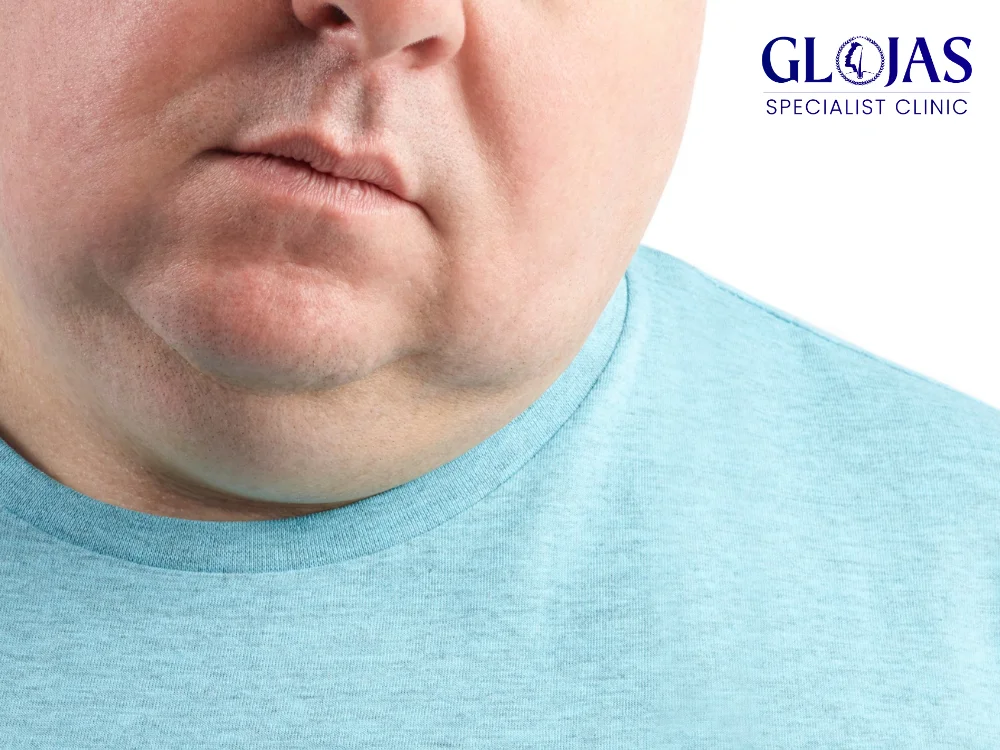
Facial fat removal has become an increasingly popular procedure for those seeking a more sculpted and defined appearance. Excess facial fat can contribute to a rounded or puffy face, making it difficult for some people to achieve their desired look through diet and exercise alone. With modern cosmetic procedures like facial fat removal, individuals can enhance their natural features and enjoy a slimmer, more contoured face. In this article, we’ll explore the benefits of facial fat removal, including liposuction, and what to expect from the procedure. What is Facial Fat Removal? Facial fat removal is a cosmetic procedure aimed at reducing fat in areas of the face, such as the cheeks, jawline, or neck, to create a more refined and defined look. This process can involve various techniques, with liposuction being one of the most common methods used to remove stubborn fat deposits. By targeting specific areas where fat tends to accumulate, facial fat removal helps enhance facial contours and improve overall facial symmetry. How Does Liposuction Work for Facial Fat Removal? Liposuction is a surgical technique designed to remove excess fat from various parts of the body, including the face. When used for facial fat removal, liposuction involves making small incisions in the targeted areas, through which a thin tube (called a cannula) is inserted to suction out the unwanted fat. This method is highly effective for removing localized fat deposits in the cheeks, chin, or neck, offering long-lasting results and a smoother facial profile. Benefits of Liposuction for Facial Fat Removal Precise Fat Removal: Liposuction allows for the precise targeting of fat deposits, resulting in a more natural and balanced appearance. Minimal Scarring: Since the incisions made during the procedure are very small, patients typically experience minimal scarring, and any marks fade over time. Quick Recovery: Liposuction for facial fat removal is generally less invasive than full facial surgeries, leading to a quicker recovery time. Permanent Results: Once the fat cells are removed, they do not grow back, providing permanent results as long as the patient maintains a stable weight. The Facial Fat Removal Procedure: Step-by-Step 1. Initial Consultation and Assessment Before undergoing facial fat removal, it’s crucial to meet with a board-certified cosmetic surgeon to discuss your goals and concerns. During the consultation, the surgeon will evaluate your facial structure, skin elasticity, and areas of excess fat to determine if you’re a good candidate for the procedure. They will also go over the different techniques available, including liposuction, and outline what can be achieved through facial fat removal. 2. Pre-Procedure Preparation In the days leading up to your facial fat removal, your surgeon may provide you with specific instructions, such as avoiding certain medications that could increase bleeding risk. You’ll also be advised to stop smoking if applicable, as smoking can interfere with the healing process. 3. The Procedure For facial fat removal via liposuction, the surgeon will begin by administering local or general anesthesia, depending on the extent of the procedure. Once the anesthesia takes effect, small incisions will be made in the targeted areas. Through these incisions, a cannula will be inserted to gently break up and remove the fat cells. Depending on the area treated, the entire procedure typically lasts between one and two hours. The surgeon will close the incisions with small sutures, and you’ll be monitored as you begin the initial recovery process. 4. Post-Procedure Care After facial fat removal, you can expect some swelling, bruising, and minor discomfort in the treated areas. These symptoms are usually temporary and should subside within a few days to weeks. Your surgeon will provide detailed aftercare instructions, which may include wearing compression garments, avoiding strenuous activity, and keeping your head elevated to minimize swelling. Most patients can return to their normal routine within a week, although it may take several months to see the full results of the procedure as the swelling gradually goes down. Benefits of Facial Fat Removal Facial fat removal offers numerous aesthetic and psychological benefits for those looking to enhance their facial contours. Here are some of the key advantages of this procedure: 1. Enhanced Facial Definition One of the primary reasons people opt for facial fat removal is to achieve a more defined facial structure. By removing excess fat from areas like the cheeks, jawline, and chin, this procedure helps create a more sculpted appearance that highlights the natural bone structure of the face. 2. Improved Symmetry Facial fat removal can also improve facial symmetry by targeting areas of disproportionate fat accumulation. Whether you have a double chin or fullness in your cheeks, this procedure allows for better balance and harmony between your facial features. 3. Long-Lasting Results Unlike non-invasive treatments, the results of facial fat removal are long-lasting. Once the fat cells are removed, they do not regenerate, ensuring that your new facial contours remain intact. Maintaining a healthy lifestyle and stable weight can further prolong the results. 4. Increased Confidence Many people find that facial fat removal dramatically improves their self-esteem. A more defined and youthful appearance can help individuals feel more confident in their everyday interactions, whether at work or in social settings. 5. Minimal Downtime Compared to more invasive facial surgeries, liposuction for facial fat removal offers the advantage of a shorter recovery period. Patients can typically resume their daily activities within a week, making it a convenient option for those with busy lifestyles. Are You a Good Candidate for Facial Fat Removal? Facial fat removal is an ideal option for individuals who are generally in good health and have specific areas of facial fat they would like to address. The best candidates typically have: Stubborn fat deposits in the face that do not respond to diet and exercise Good skin elasticity to ensure the skin will contract naturally after fat removal Realistic expectations about the outcome of the procedure It’s important to note that facial fat removal is not a weight-loss procedure, but rather a contouring treatment aimed at improving facial definition. Risks and
7 Effective Ways to Remove Dark Patches from Your Face
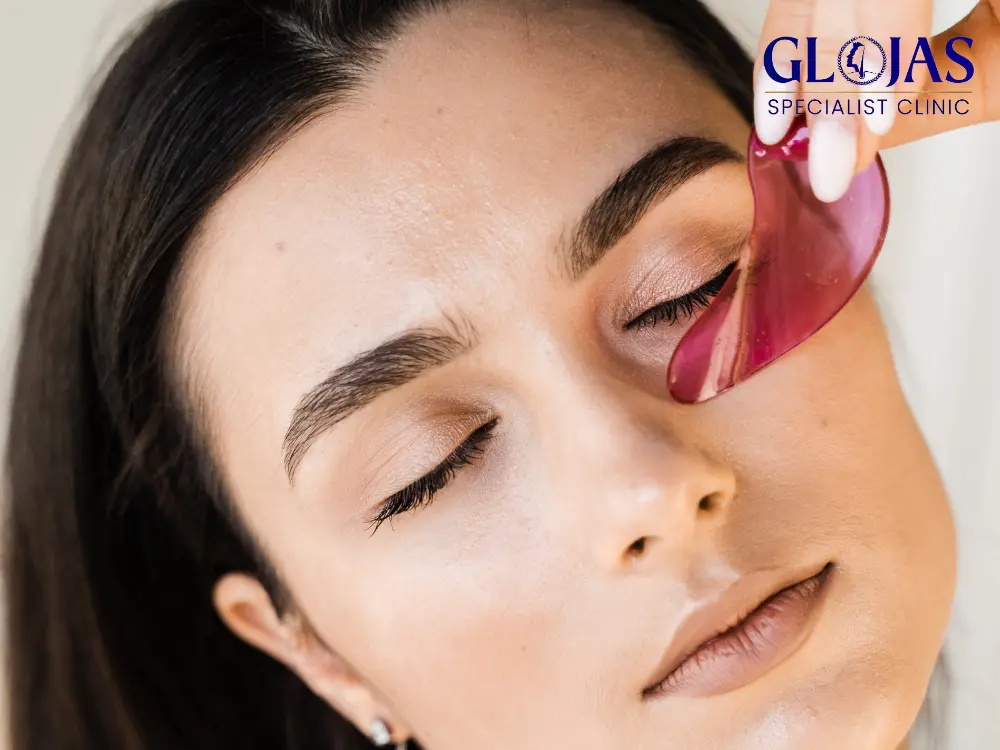
How to get rid of dark patches on face, often caused by hyperpigmentation, can be a significant concern for many people. These patches may result from various factors, including sun exposure, hormonal changes, acne scars, or even certain medications. If you’ve been struggling with uneven skin tone and wondering how to get rid of dark patches on your face, you’re not alone. Fortunately, there are effective treatments available that can help you achieve a clearer, more radiant complexion. In this article, we’ll explore several proven methods for treating dark patches, including the benefits of SOS Glutathione Supplement, and provide tips on preventing future pigmentation issues. Understanding How to get rid of dark patches on face Dark patches on the face are typically a result of hyperpigmentation, a condition where certain areas of the skin produce more melanin (the pigment that gives skin its color) than others. This excess melanin can create spots or patches that appear darker than the surrounding skin. Common Causes of Dark Patches Understanding the root causes of dark patches can help in effectively treating and preventing them. Some common causes include: Sun Exposure: UV rays from the sun can trigger the production of melanin, leading to dark spots or patches. Hormonal Changes: Pregnancy, birth control pills, and other hormonal fluctuations can cause melasma, a type of hyperpigmentation. Post-Inflammatory Hyperpigmentation (PIH): This occurs after an injury to the skin, such as acne or cuts, resulting in dark spots as the skin heals. Medications: Certain medications can cause increased pigmentation as a side effect. Aging: As the skin ages, it may develop age spots or liver spots due to long-term sun exposure. How to Get Rid of Dark Patches on Face: 7 Powerful Solutions There are several effective treatments available to help reduce the appearance of dark patches on the face. Here are seven solutions to consider: 1. Topical Treatments with Hydroquinone Hydroquinone is a skin-lightening agent that works by inhibiting melanin production. It’s often prescribed for treating dark patches and can be highly effective when used consistently. Hydroquinone is available in various strengths, and it’s essential to use it under the guidance of a dermatologist to avoid potential side effects like skin irritation or further pigmentation. 2. Vitamin C Serums Vitamin C is a powerful antioxidant that helps brighten the skin and reduce the appearance of dark patches by inhibiting melanin production. Regular use of a vitamin C serum can lighten existing dark spots and prevent new ones from forming. Look for serums with a stable form of vitamin C, such as ascorbic acid, for maximum effectiveness. 3. SOS Glutathione Supplement The SOS Glutathione Supplement is gaining popularity as a powerful solution for reducing dark patches on the face. Glutathione is a potent antioxidant naturally found in the body that helps detoxify the skin and inhibit melanin production. Taking a glutathione supplement can help lighten hyperpigmentation and promote a more even skin tone from within. The SOS Glutathione Supplement is particularly noted for its high bioavailability, meaning it’s easily absorbed and utilized by the body, leading to faster and more noticeable results. 4. Chemical Peels Chemical peels involve applying a chemical solution to the skin, which causes the top layer to peel off, revealing new, smoother skin underneath. Peels containing glycolic acid, salicylic acid, or lactic acid are commonly used to treat dark patches. These peels can vary in strength, with stronger peels offering more dramatic results but requiring longer recovery times. 5. Microdermabrasion Microdermabrasion is a non-invasive procedure that exfoliates the skin’s surface, removing dead skin cells and promoting the growth of new, healthier skin. This treatment can be effective in reducing the appearance of dark patches and improving overall skin tone. Microdermabrasion is gentle enough for most skin types and has minimal downtime, making it a convenient option for many people. 6. Retinoids Retinoids, derived from vitamin A, are commonly used in skincare to promote cell turnover and improve skin texture. They help fade dark patches by speeding up the shedding of pigmented skin cells and encouraging the growth of new, evenly pigmented skin. Prescription-strength retinoids, such as tretinoin, are more potent than over-the-counter retinol products and can be particularly effective for treating hyperpigmentation. 7. Laser Therapy Laser therapy uses targeted light energy to break down excess melanin in the skin. There are different types of lasers used for treating dark patches, including fractional lasers and intense pulsed light (IPL) therapy. Laser treatments can be very effective, especially for stubborn pigmentation, but they may require multiple sessions and can be more costly than other options. Preventing Future Dark Patches While treating existing dark patches is important, prevention is key to maintaining an even skin tone. Here are some tips to help prevent future pigmentation issues: 1. Sun Protection Sun exposure is one of the leading causes of dark patches on the face. To prevent further pigmentation, it’s essential to protect your skin from UV rays. Use a broad-spectrum sunscreen with an SPF of 30 or higher every day, even on cloudy days. Reapply sunscreen every two hours when outdoors, and wear protective clothing, hats, and sunglasses to shield your skin from the sun. 2. Avoid Picking at Your Skin Picking at acne, scabs, or other skin lesions can lead to post-inflammatory hyperpigmentation. It’s important to resist the urge to pick at your skin and instead treat blemishes with appropriate skincare products. 3. Use Gentle Skincare Products Harsh skincare products can irritate the skin and trigger inflammation, leading to dark patches. Opt for gentle, fragrance-free cleansers and moisturizers that won’t aggravate your skin. 4. Maintain a Consistent Skincare Routine Consistency is key when it comes to preventing dark patches. Use products containing ingredients like vitamin C, niacinamide, or licorice extract to help maintain an even skin tone. Exfoliate regularly, but not excessively, to remove dead skin cells and promote a healthy, radiant complexion. FAQs About How to Get Rid of Dark Patches on Face 1. How long does it
